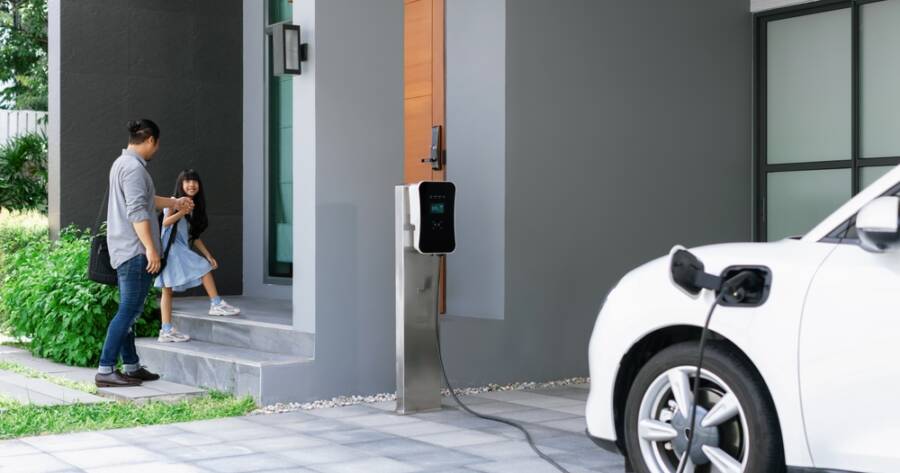Electric vehicles (EVs) are growing in popularity, thanks to their eco-friendly nature, reduced fuel costs, and the increasing number of available models. If you’re an EV owner, one of the most convenient ways to keep your vehicle charged is by installing a home charging station. Home charging stations make it easy to top up your car overnight, ensuring it’s ready to go whenever you need it.
Choose the Right Charging Level
When it comes to home charging stations, you have two primary options: Level 1 and Level 2 charging.
- Level 1 Charging: This is the most basic option and uses a standard 120-volt household outlet. Level 1 chargers come with most EVs and are simple to use, but they have one major drawback—they are slow. Charging your EV with a Level 1 charger can take 20-40 hours, depending on the battery capacity of your vehicle. This option is best if you drive short distances daily and have plenty of time to charge.
- Level 2 Charging: If you want faster charging times, Level 2 is the way to go. It uses a 240-volt outlet, similar to what you’d use for large appliances like a dryer. With a Level 2 charger, you can fully charge most EVs in 4-10 hours, making it much more practical for regular use. Installing a Level 2 charger requires additional equipment and professional installation, but the convenience is often worth it.
Determine Your Electrical Needs
Before you proceed with installation, it’s crucial to evaluate your home’s electrical system. A Level 2 charging station requires a 240-volt circuit, and not all homes are ready for this kind of setup. An electrician can help you determine if your electrical panel can handle the additional load or if upgrades are needed.
Contact a licensed electrician to assess your home and identify any changes needed to accommodate your charging station. If your panel doesn’t have the capacity, you may need an upgrade, which can add to the overall cost but ensures safe and efficient charging.
Purchase the Charging Station
Once you have your electrical needs sorted, it’s time to choose the right charging station for your home. There are numerous brands and models available, each with different features. Some key factors to consider include:
- Power Output: Look for a charging station with a power output that suits your vehicle’s capabilities.
- Smart Features: Many modern charging stations come with smart features, such as Wi-Fi connectivity, mobile app control, and energy usage tracking.
- Safety Certifications: Make sure the charger is certified by recognized authorities such as UL (Underwriters Laboratories) to ensure safety and reliability.
Install the Charging Station
Installing a Level 2 charging station involves some electrical work, so it’s generally best left to a professional. The installation process includes mounting the charging unit, wiring it to your electrical panel, and ensuring that all connections meet local electrical codes. Hiring a licensed electrician is key to ensuring everything is installed safely and functions correctly.
Depending on the location of your garage or driveway, you may also need to decide whether to have the station mounted on an interior wall or an exterior one, as well as whether any trenching or additional wiring is needed. Discuss your preferences with your electrician to find the most convenient setup.
Test and Start Charging
After the installation is complete, it’s time to test your charging station. The electrician will typically check all connections, make sure the system is working properly, and provide you with guidance on how to use it effectively. Once it’s up and running, you can plug in your EV and start enjoying the convenience of home charging.
To make the most of your home charging setup, consider setting a schedule for charging during off-peak hours. Many utility companies offer lower rates for electricity used during these times, which can save you money in the long run.
Learn More About Home Charging Stations
Setting up a home charging station for your electric vehicle is a straightforward process that can significantly enhance the convenience of owning an EV. By choosing the right charging level, ensuring your home’s electrical system is ready, and getting professional installation, you can quickly get set up and start enjoying reliable charging right from your driveway. With just a few steps, you’ll be able to say goodbye to frequent trips to public charging stations and enjoy the simplicity of home charging.
